Jie Shuai
SMoT: Think in State Machine
Dec 29, 2023Abstract:Current prompting approach for language model inference mainly rely on Language Model's (LLM) autonomous exploration of reasoning paths, confronts an inevitable retracing operation when erroneous routes are encountered. This is followed by the pursuit of alternative reasoning paths. However, humans are adept at abstracting optimal solutions from problems, thereby facilitating swift and precise reasoning for similar problems resolution. In light of this, we delves into the potential of harnessing expert knowledge to enhance problem-solving within LLMs. We introduce a novel paradigm, the State Machine of Thought (SMoT), which employs predefined state machines to furnish LLMs with efficient reasoning paths, thereby eliminating fruitless exploration. Furthermore, we propose a multi-agent mechanism that assigns different objectives to agents, aiming to enhance the accuracy of SMoT reasoning. The experimental results, derived from an array reasoning task, reveal that SMoT realizes an extraordinary accuracy of 95\%, surpassing the performance of the state-of-the-art baselines.
A Review-aware Graph Contrastive Learning Framework for Recommendation
May 04, 2022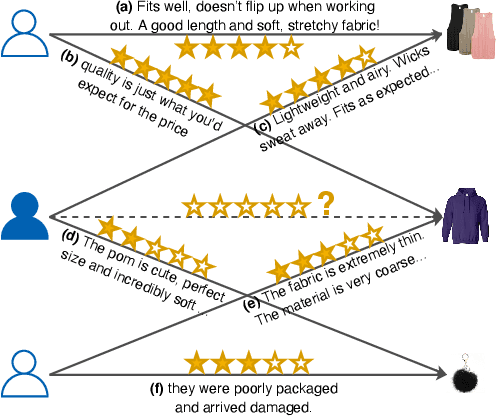
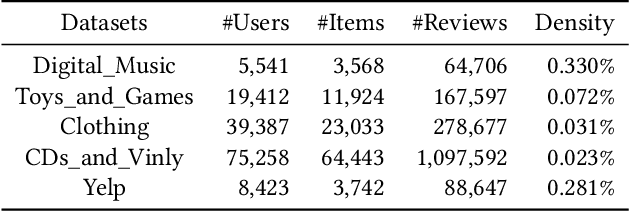
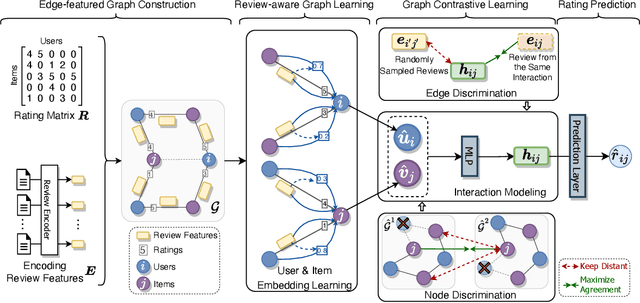
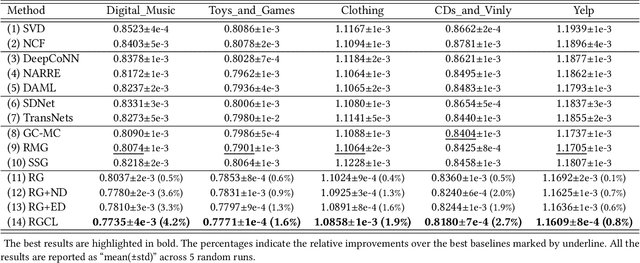
Abstract:Most modern recommender systems predict users preferences with two components: user and item embedding learning, followed by the user-item interaction modeling. By utilizing the auxiliary review information accompanied with user ratings, many of the existing review-based recommendation models enriched user/item embedding learning ability with historical reviews or better modeled user-item interactions with the help of available user-item target reviews. Though significant progress has been made, we argue that current solutions for review-based recommendation suffer from two drawbacks. First, as review-based recommendation can be naturally formed as a user-item bipartite graph with edge features from corresponding user-item reviews, how to better exploit this unique graph structure for recommendation? Second, while most current models suffer from limited user behaviors, can we exploit the unique self-supervised signals in the review-aware graph to guide two recommendation components better? To this end, in this paper, we propose a novel Review-aware Graph Contrastive Learning (RGCL) framework for review-based recommendation. Specifically, we first construct a review-aware user-item graph with feature-enhanced edges from reviews, where each edge feature is composed of both the user-item rating and the corresponding review semantics. This graph with feature-enhanced edges can help attentively learn each neighbor node weight for user and item representation learning. After that, we design two additional contrastive learning tasks (i.e., Node Discrimination and Edge Discrimination) to provide self-supervised signals for the two components in recommendation process. Finally, extensive experiments over five benchmark datasets demonstrate the superiority of our proposed RGCL compared to the state-of-the-art baselines.
Method to Annotate Arrhythmias by Deep Network
Jun 09, 2018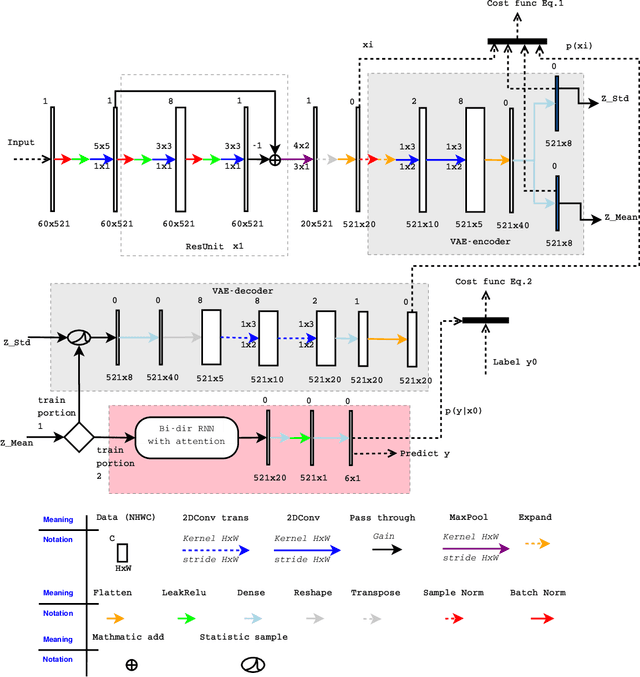
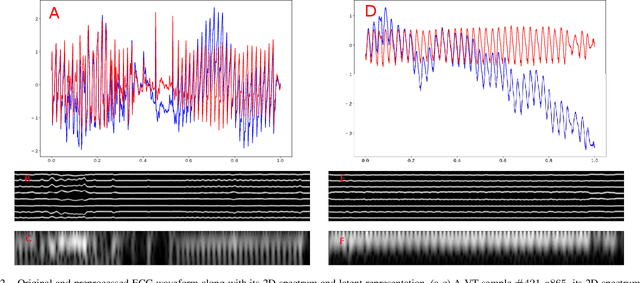

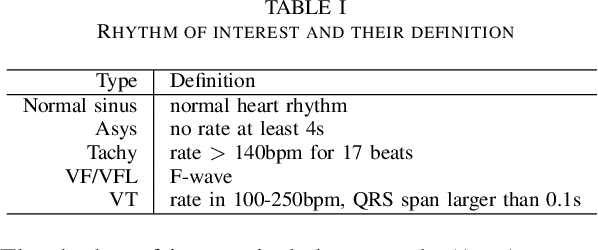
Abstract:This study targets to automatically annotate on arrhythmia by deep network. The investigated types include sinus rhythm, asystole (Asys), supraventricular tachycardia (Tachy), ventricular flutter or fibrillation (VF/VFL), ventricular tachycardia (VT). Methods: 13s limb lead ECG chunks from MIT malignant ventricular arrhythmia database (VFDB) and MIT normal sinus rhythm database were partitioned into subsets for 5-fold cross validation. These signals were resampled to 200Hz, filtered to remove baseline wandering, projected to 2D gray spectrum and then fed into a deep network with brand-new structure. In this network, a feature vector for a single time point was retrieved by residual layers, from which latent representation was extracted by variational autoencoder (VAE). These front portions were trained to meet a certain threshold in loss function, then fixed while training procedure switched to remaining bidirectional recurrent neural network (RNN), the very portions to predict an arrhythmia category. Attention windows were polynomial lumped on RNN outputs for learning from details to outlines. And over sampling was employed for imbalanced data. The trained model was wrapped into docker image for deployment in edge or cloud. Conclusion: Promising sensitivities were achieved in four arrhythmias and good precision rates in two ventricular arrhythmias were also observed. Moreover, it was proven that latent representation by VAE, can significantly boost the speed of convergence and accuracy.
 Add to Chrome
Add to Chrome Add to Firefox
Add to Firefox Add to Edge
Add to Edge